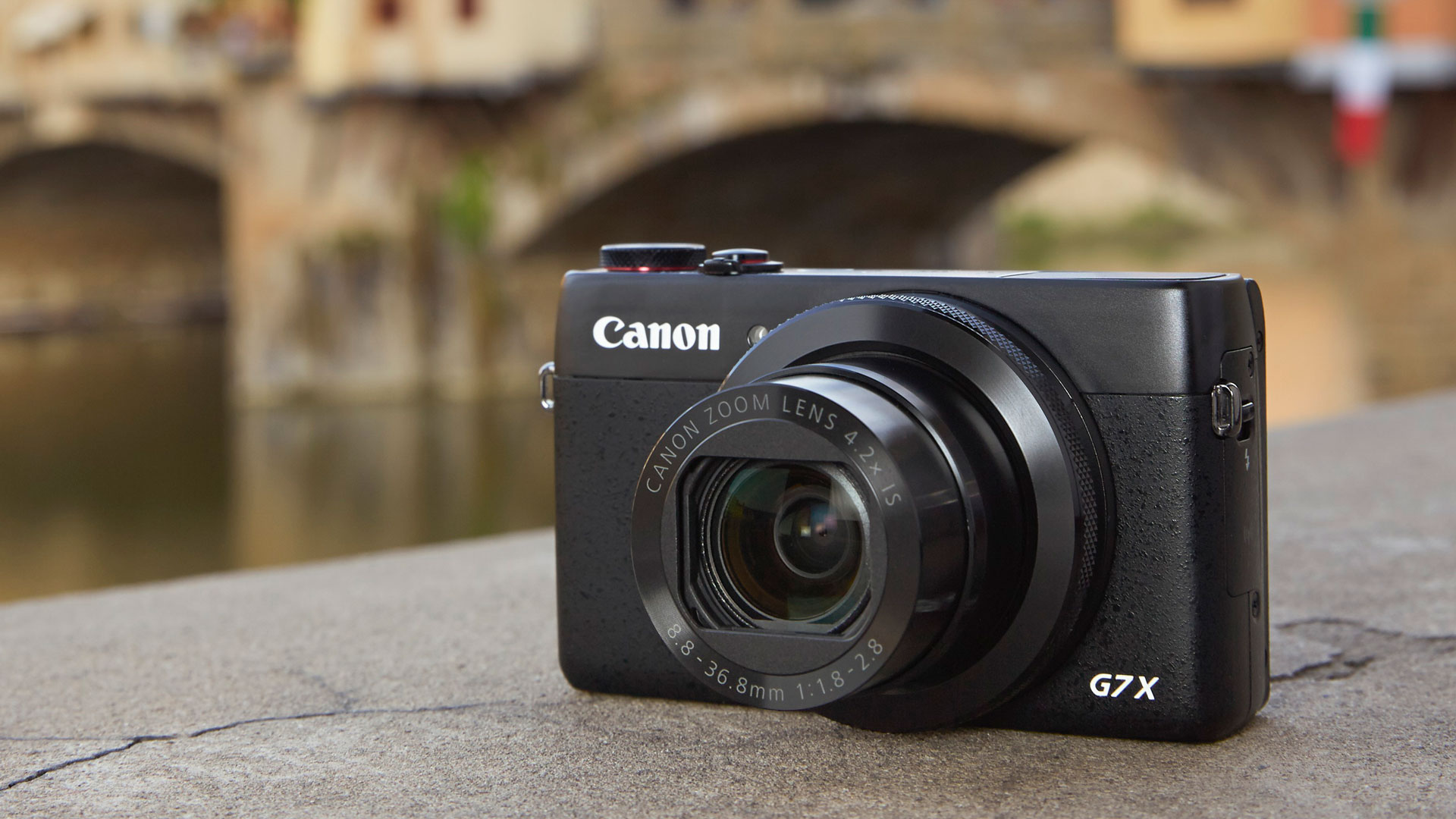The Canon PowerShot G7 X delivers more pixels in a smaller package
Canon chooses a 1-inch sensor to for its latest expert compact

• Review updated with resolution, signal-to-noise and dynamic range lab tests
The PowerShot G7 X joins Canon's existing two heavyweight expert compacts, the G16 and G1 X Mark 11, but the older G16 has a small 1/1.7-inch type sensor while the G1 X Mark II has a larger 1.5-type sensor (almost APS-C size) but bulk to match.
The G7 X blends the best of both worlds, with a 1-inch sensor that's a little smaller than the the one in the G1 X Mark II but has a much higher resolution, at 20.2 megapixels.
Canon has used a 'back-illuminated' CMOS sensor, a design first seen in small-sensor compacts, where the sensor circuitry is relocated to the back of the chip allowing more light to hit the photo-receptors.
This smaller sensor means a smaller body – at just 304g, it's an amazing 254g lighter than the chunky G1 X Mark II.
PowerShot G7 X key features
The PowerShot G7 X comes with a 24-100mm equivalent f/1.8-2.8 zoom lens, which is down very slightly on the range offered by Canon's other two big Powershots, but it's still a good everyday range, and it offers a maximum aperture of f/2.8 even at full zoom, which is important.
The metal body has a 3-inch 1,040k-dot screen on the back which tilts upwards for low angle photography, and a lens ring on the front can be used for directly adjusting the aperture setting, shutter speed and more.
Sign up for breaking news, reviews, opinion, top tech deals, and more.
It's good for action and low light photography, too. It goes right up to ISO 12,800, and the decent-sized 1-inch sensor should ensure usable quality at higher ISOs. The PowerShot G7 X can shoot continuously at 6 frames per second for up to 700 frames.
You get wi-fi and NFC built in, 5-axis image stabilisation and full HD movies at frame rates up to 60p, with the option to control shutter speed, aperture and sensitivity manually.
The PowerShot G7 X looks like a real pint-sized powerhouse, providing advanced photographic options in a camera you can fit in your pocket.
The only downside is the price – it goes on sale for £570 (approximately US$920/AU$1,020) in October 2014, and for that money you can get some very good compact system cameras and the ability to swap lenses.

Rod is an independent photographer and photography journalist with more than 30 years' experience. He's previously worked as Head of Testing for Future’s photography magazines, including Digital Camera, N-Photo, PhotoPlus, Professional Photography, Photography Week and Practical Photoshop, and as Reviews Editor on Digital Camera World.